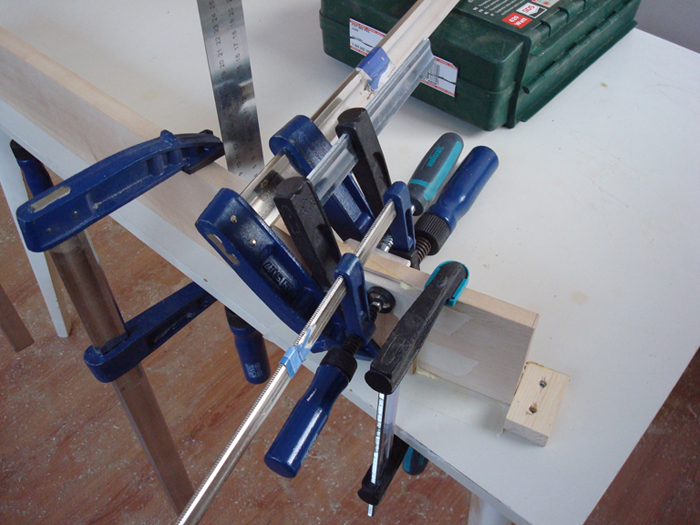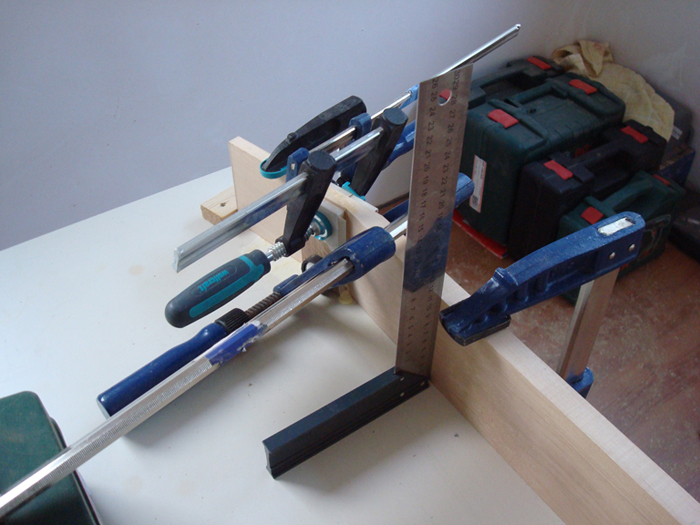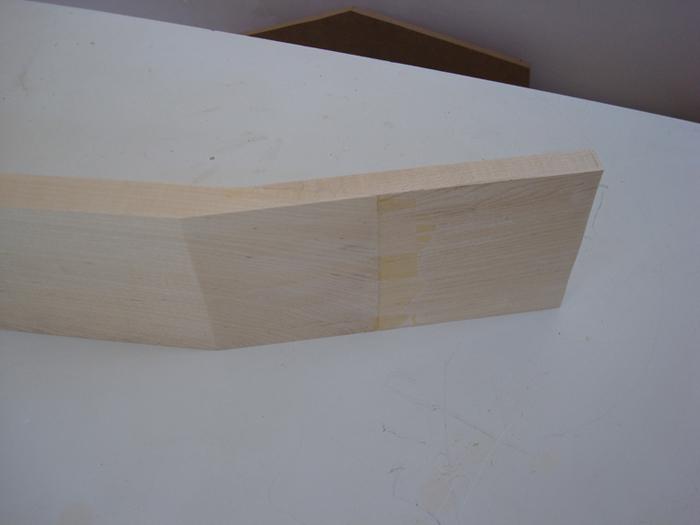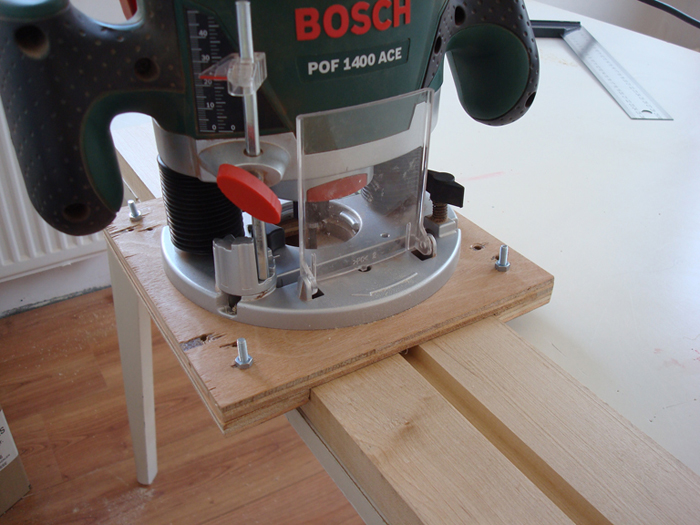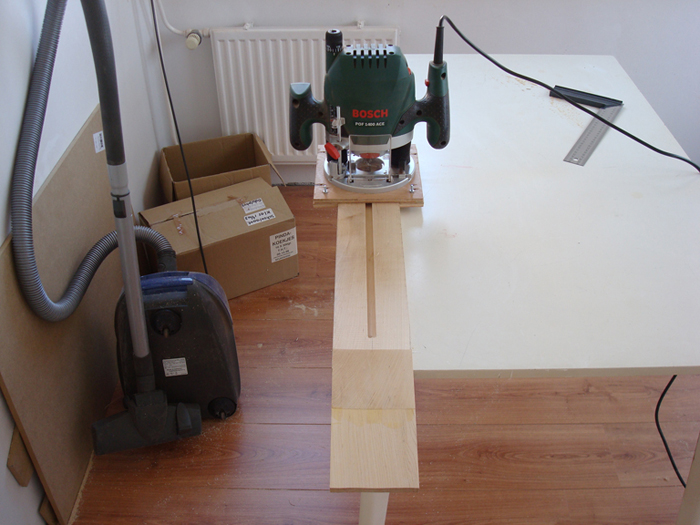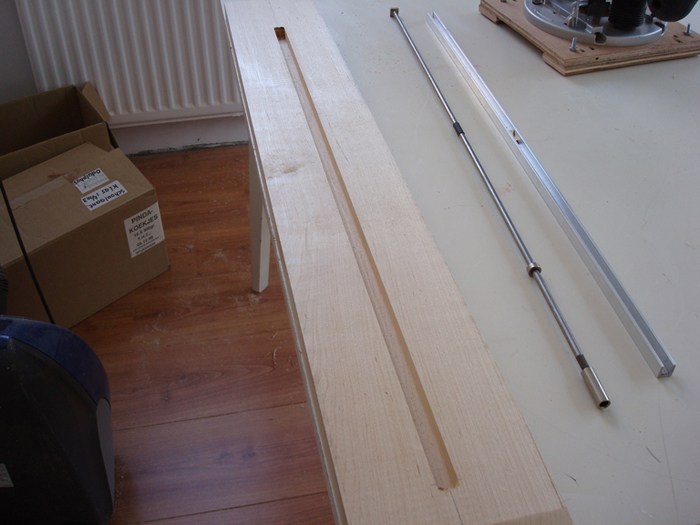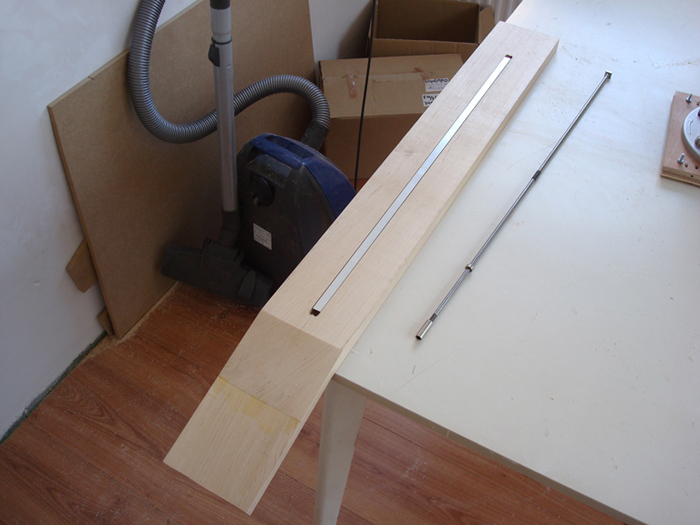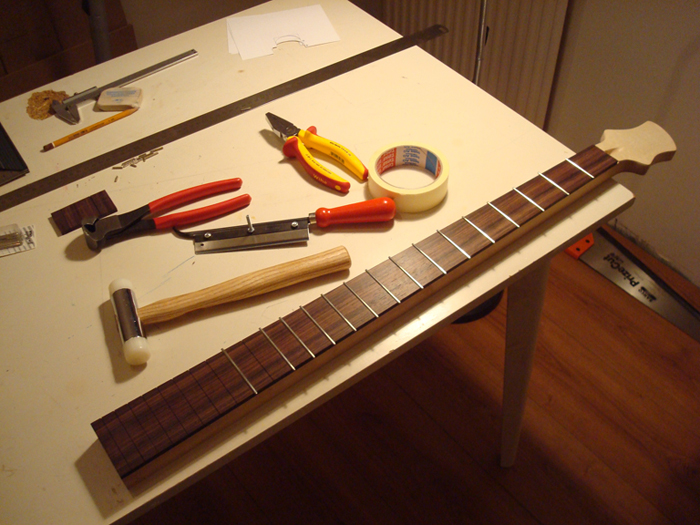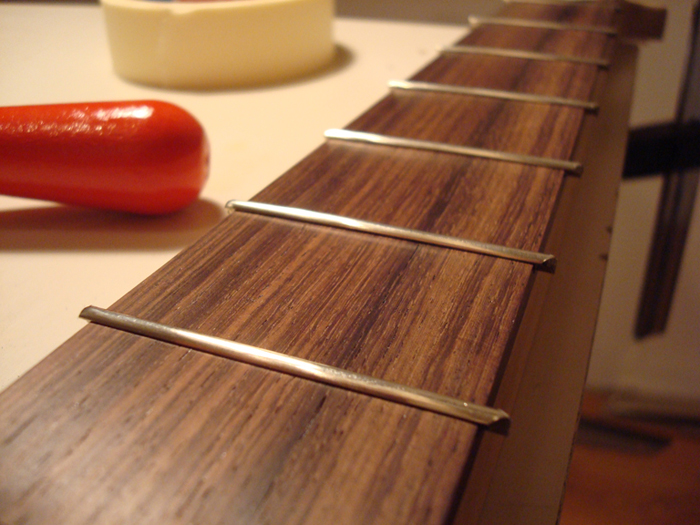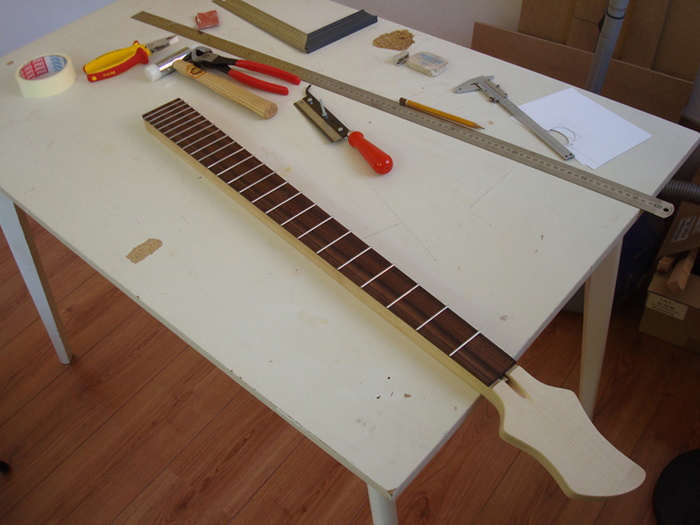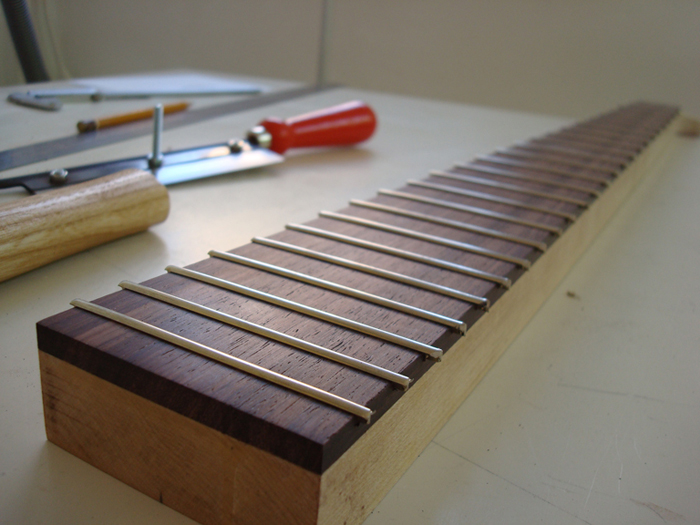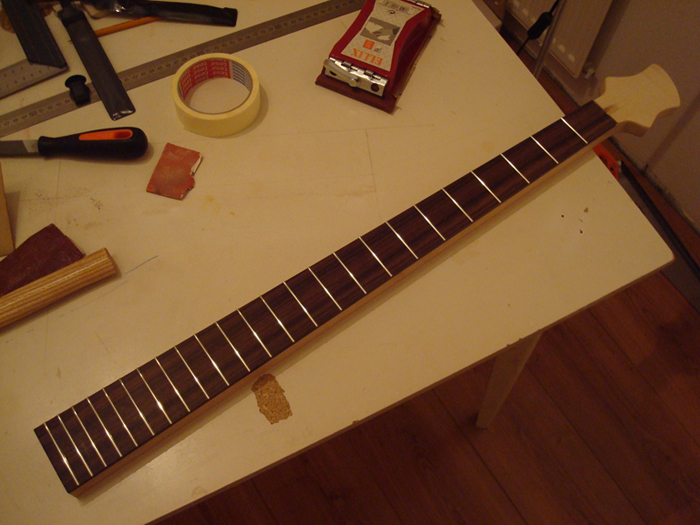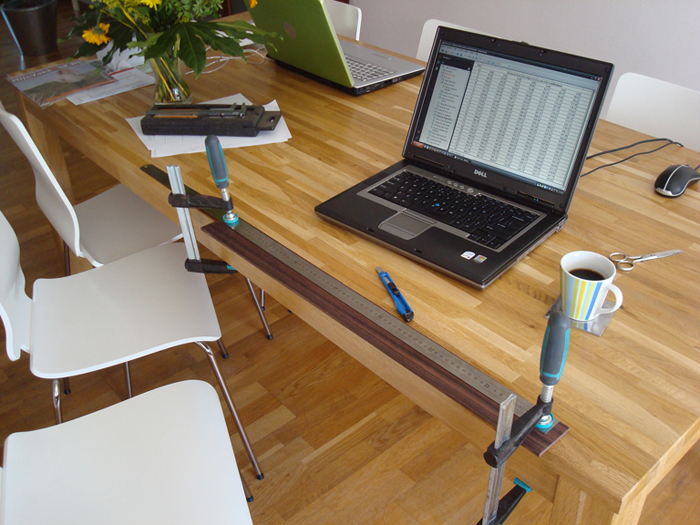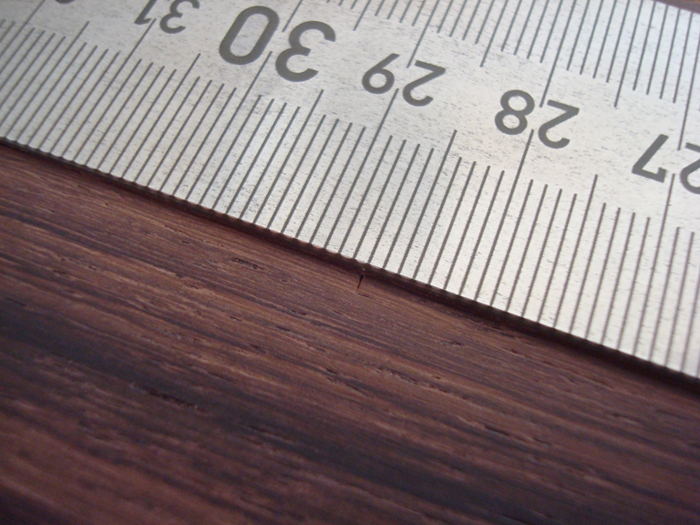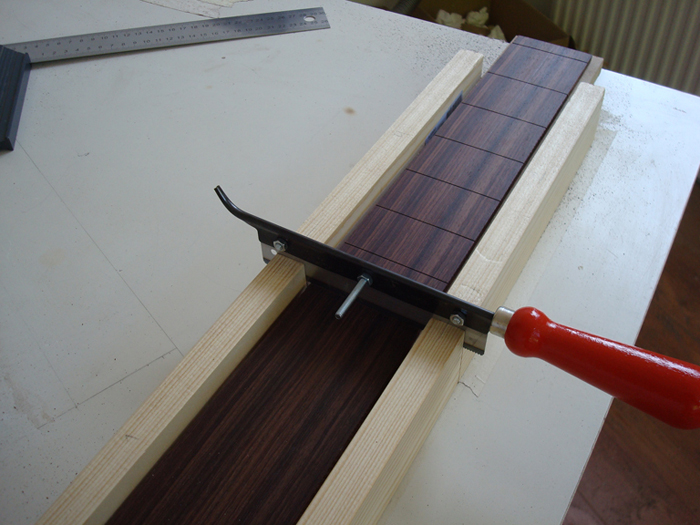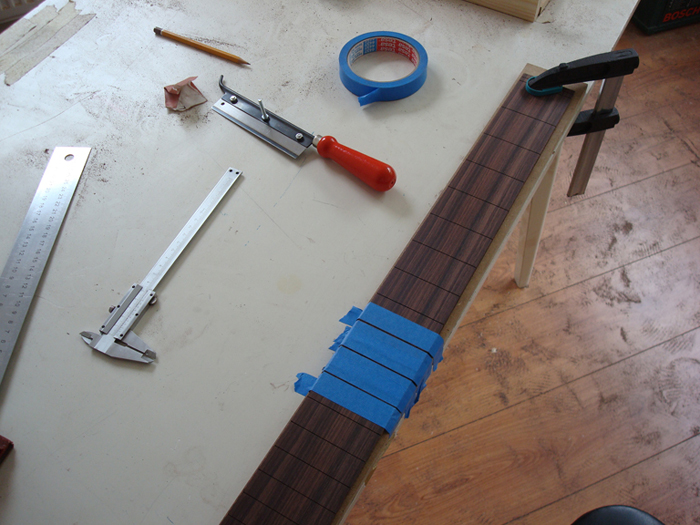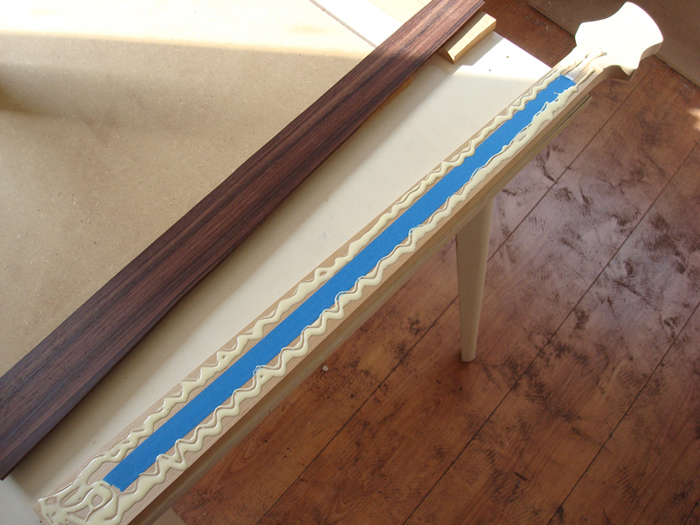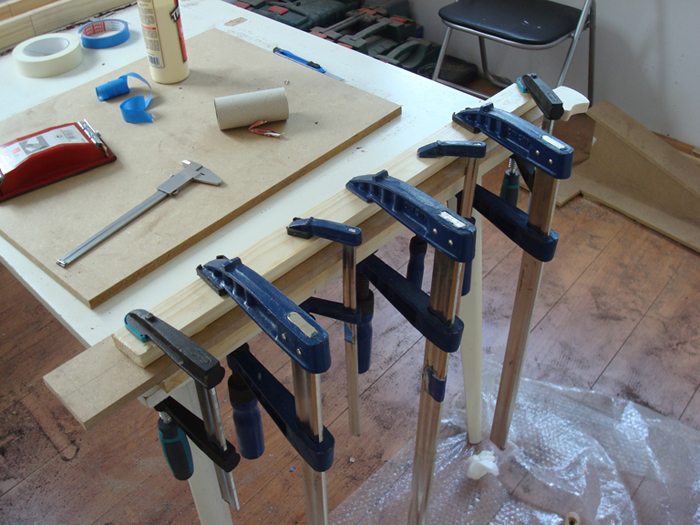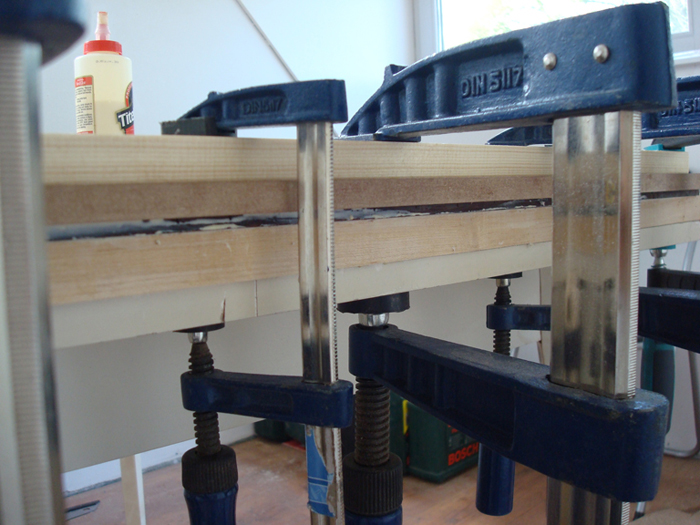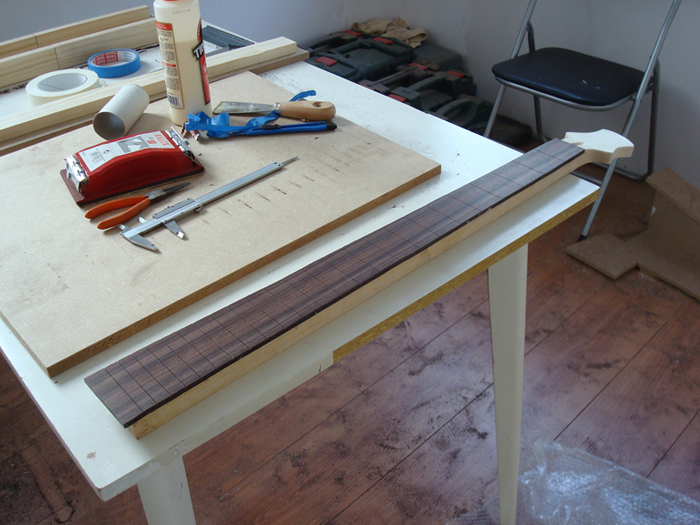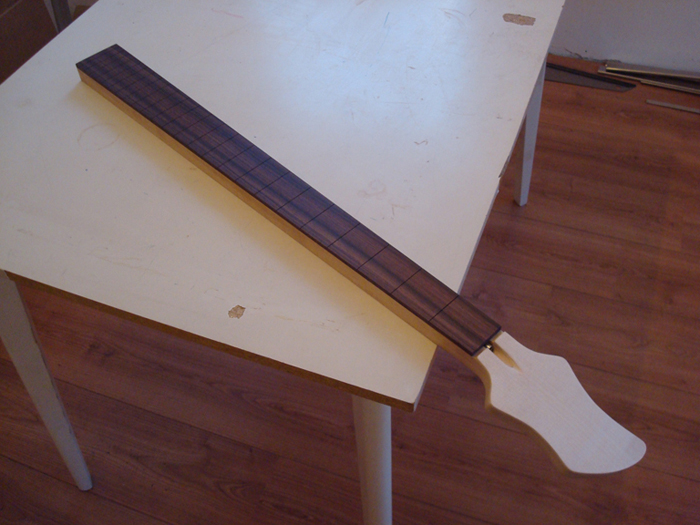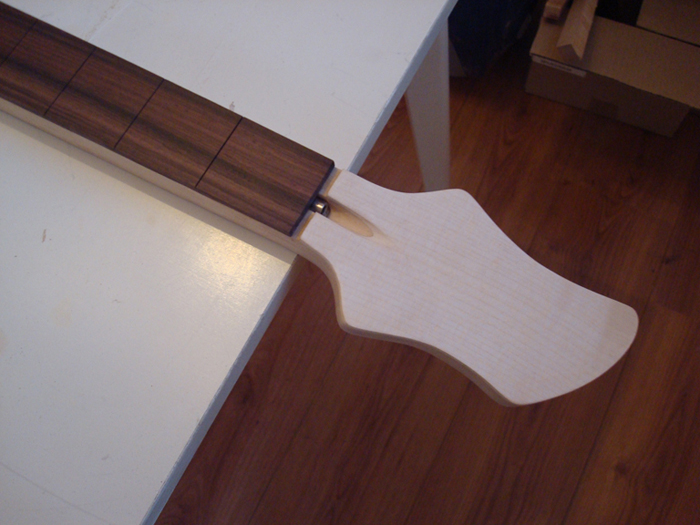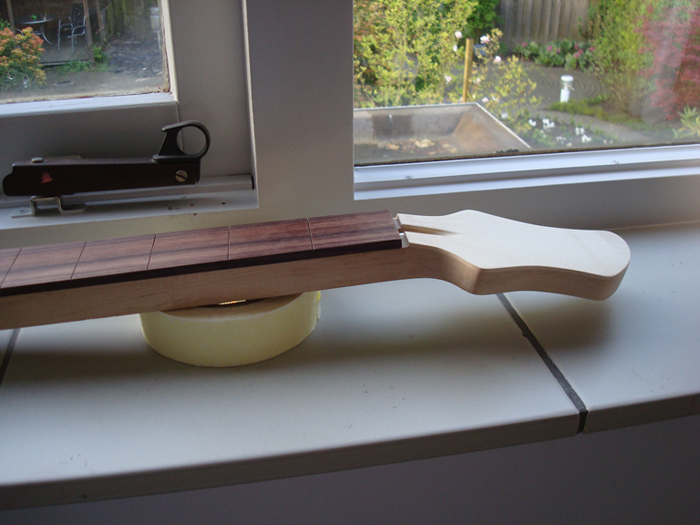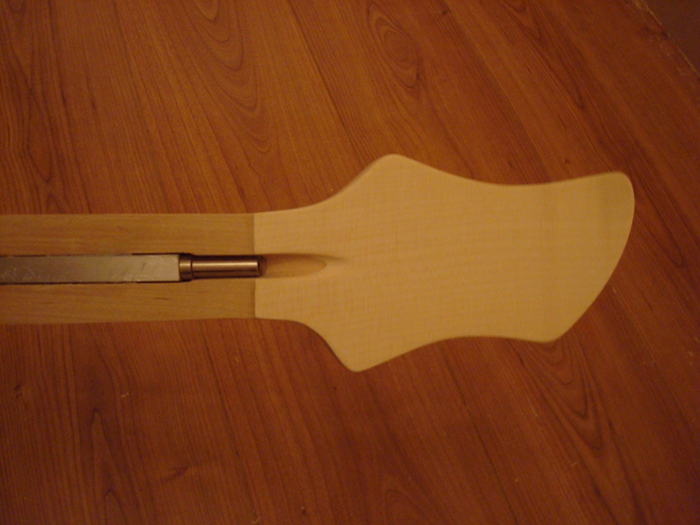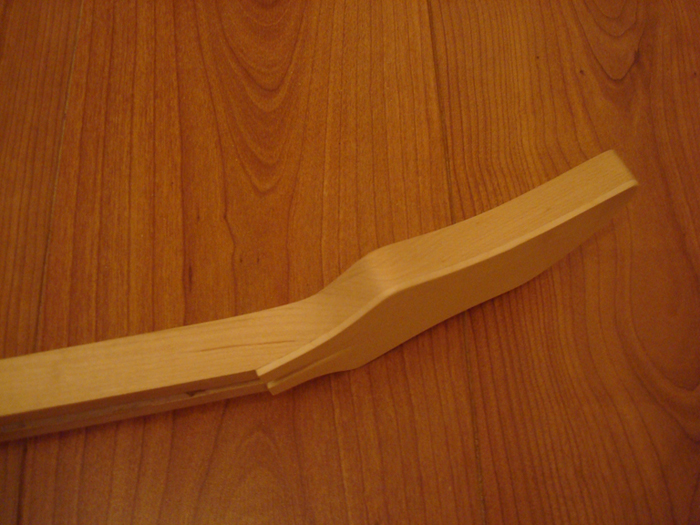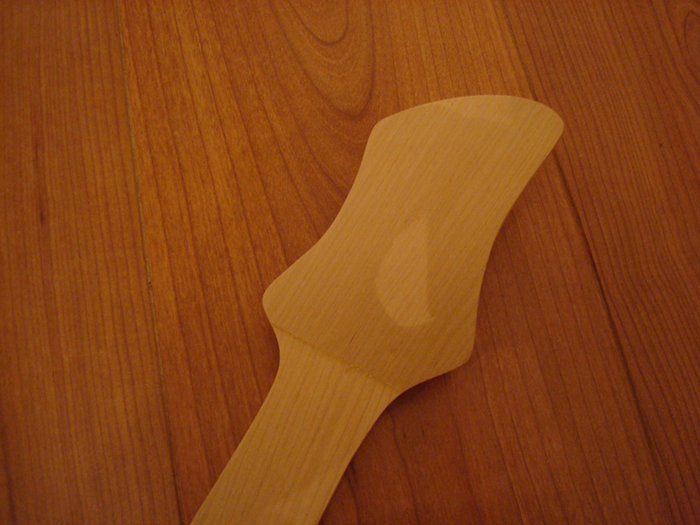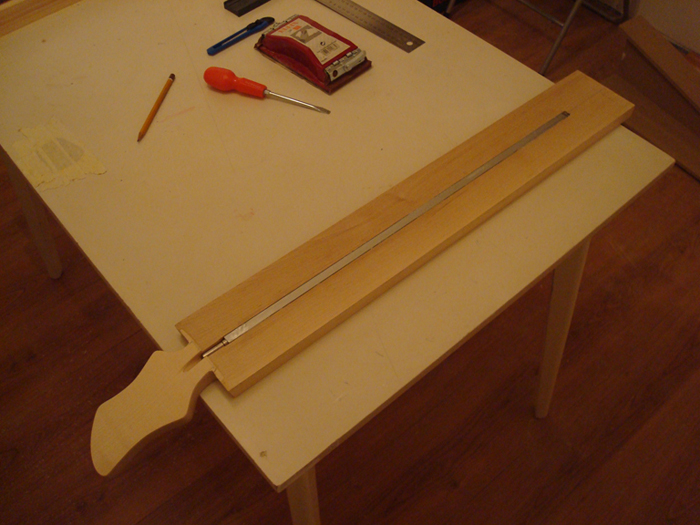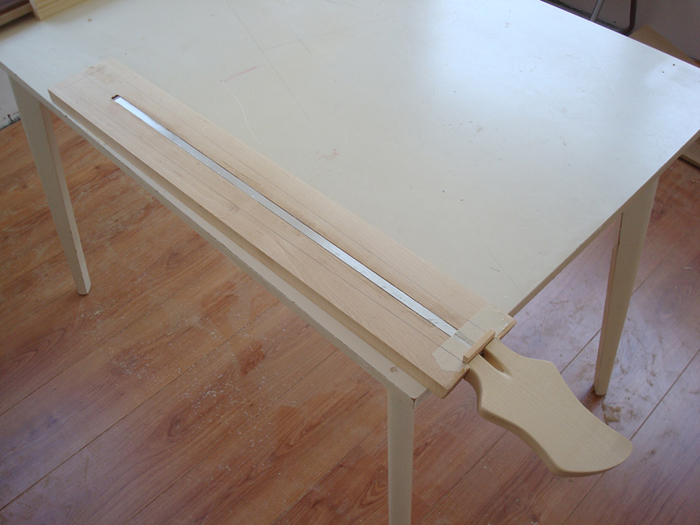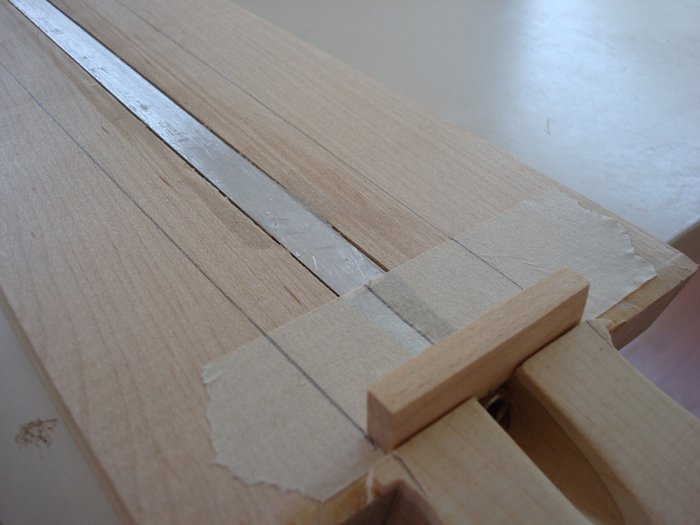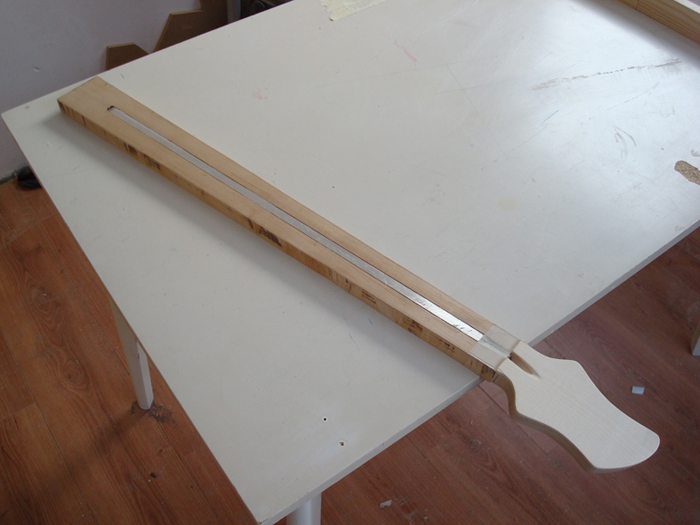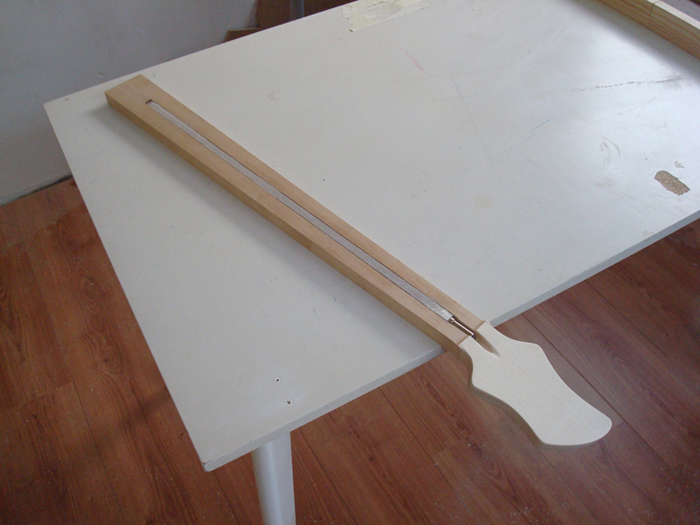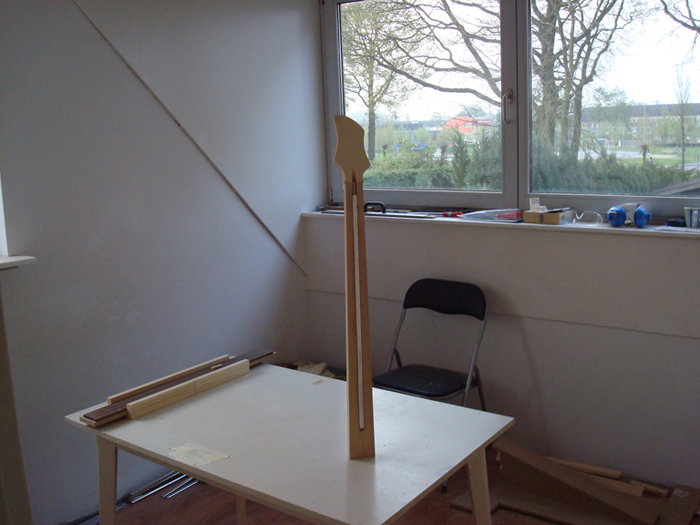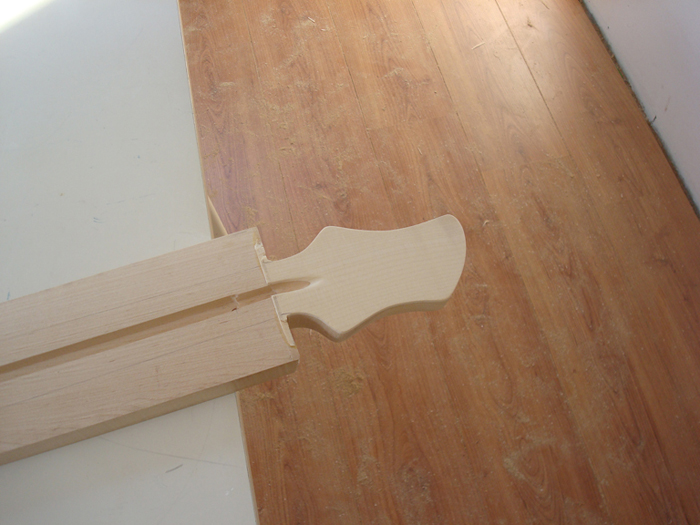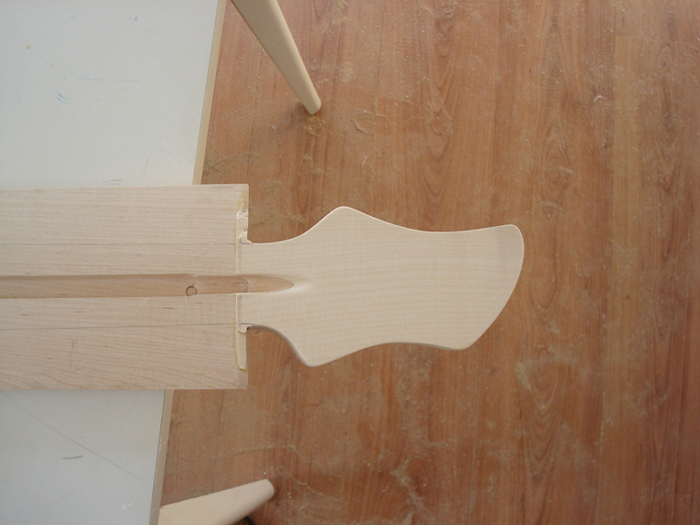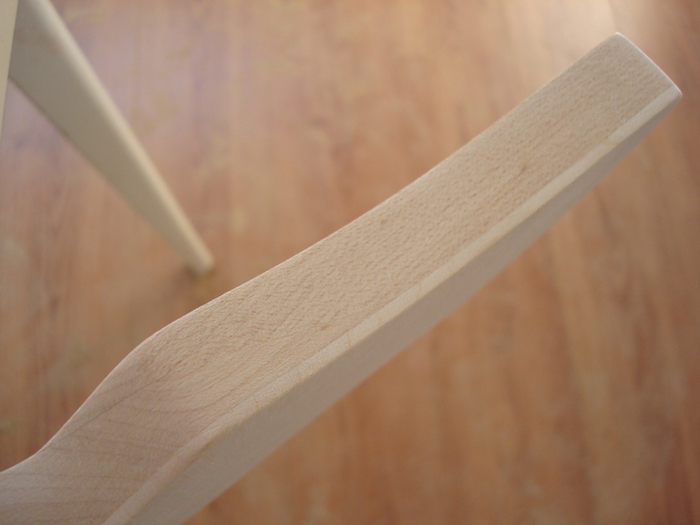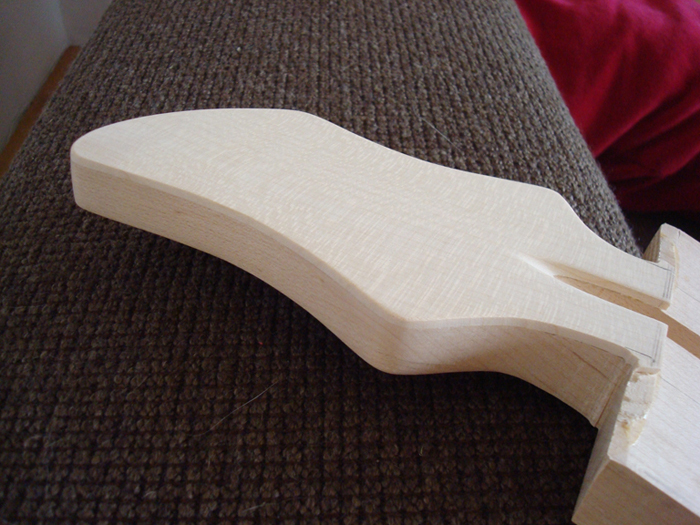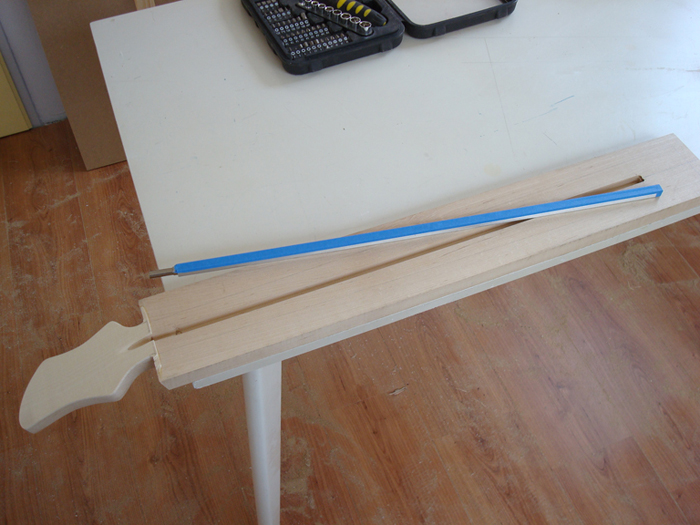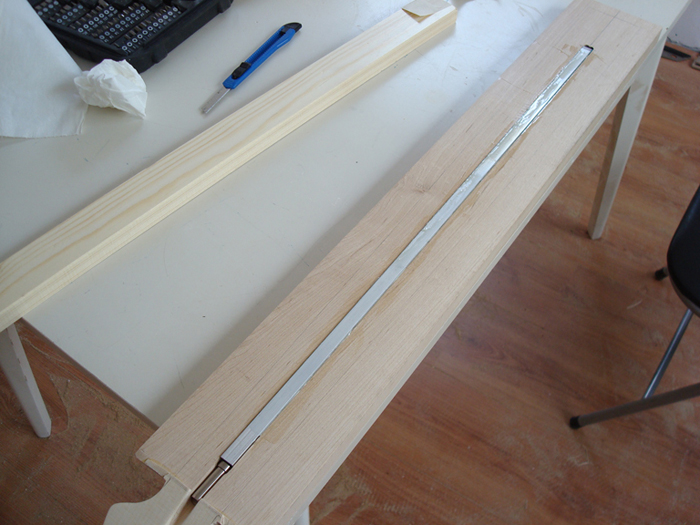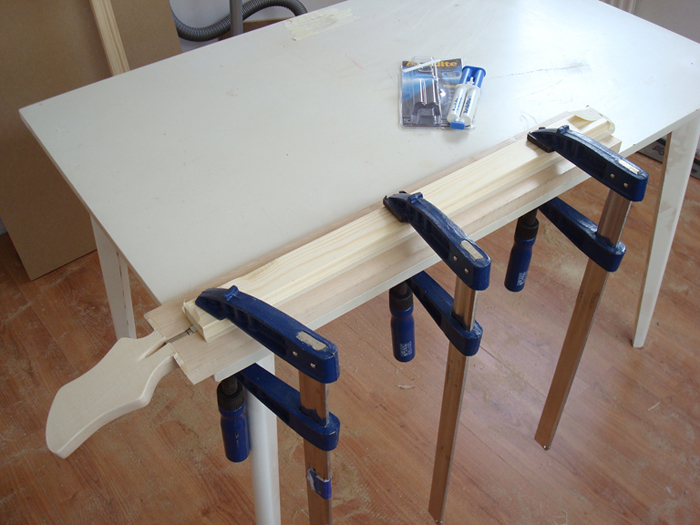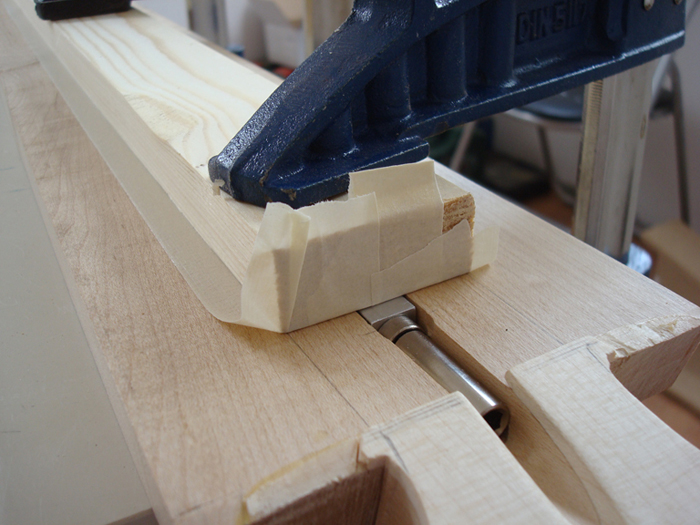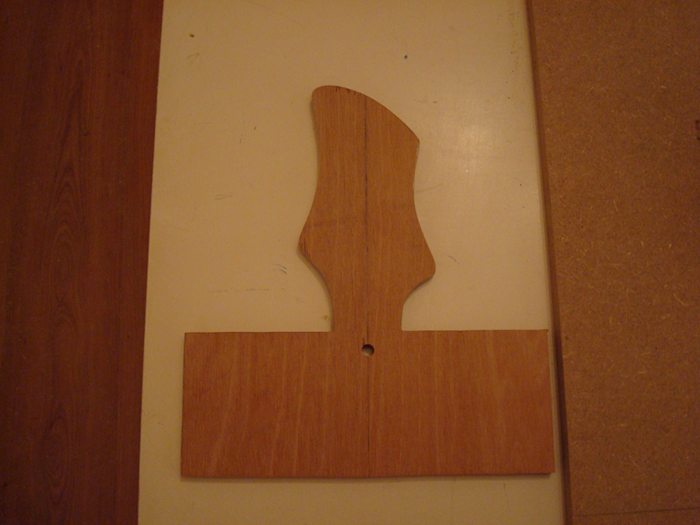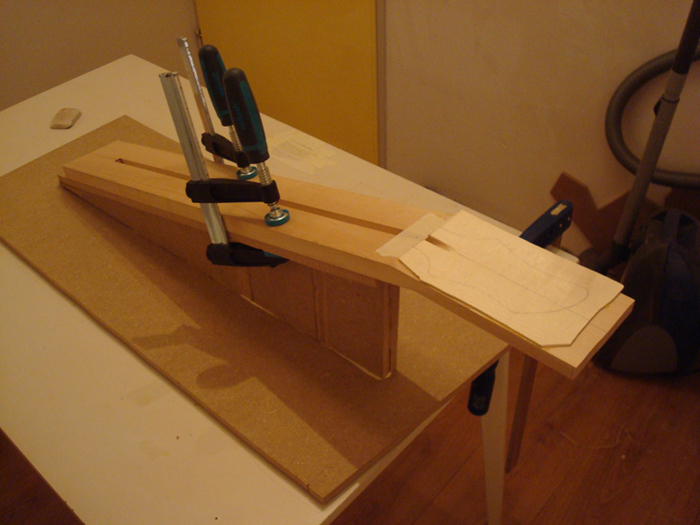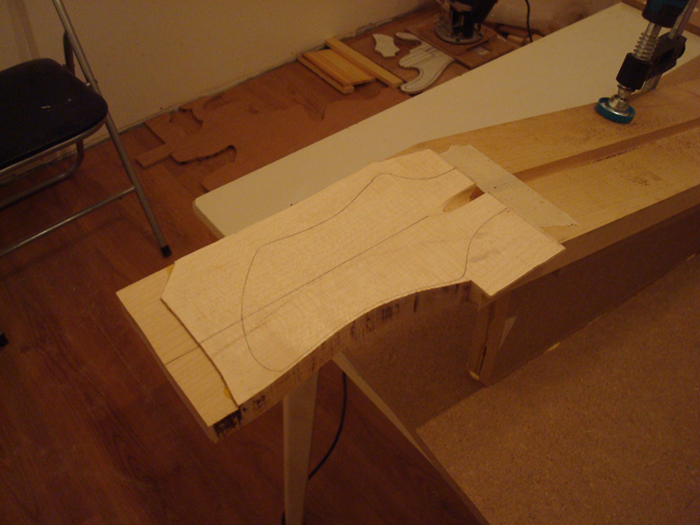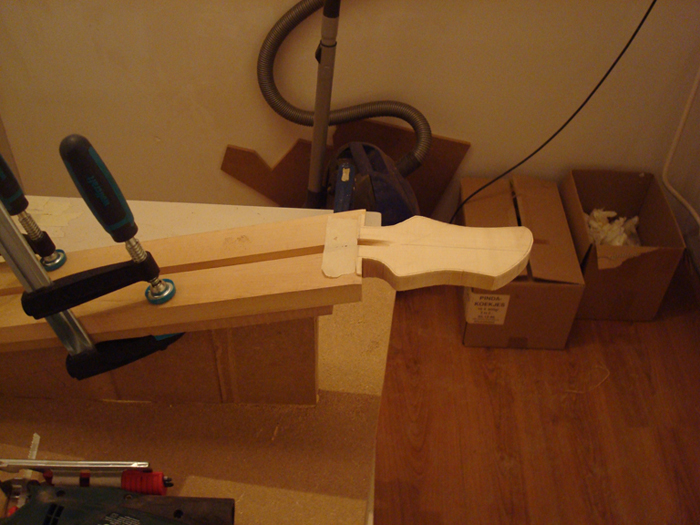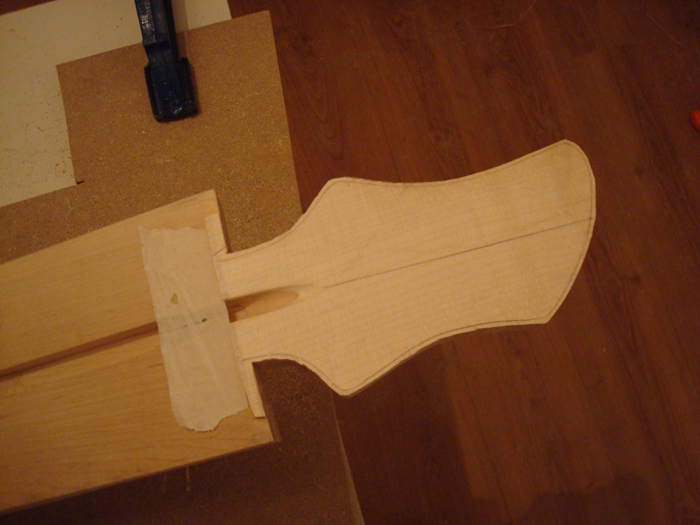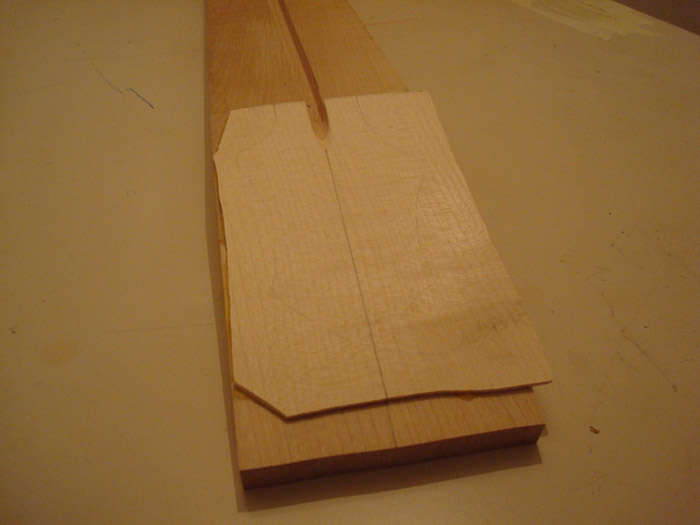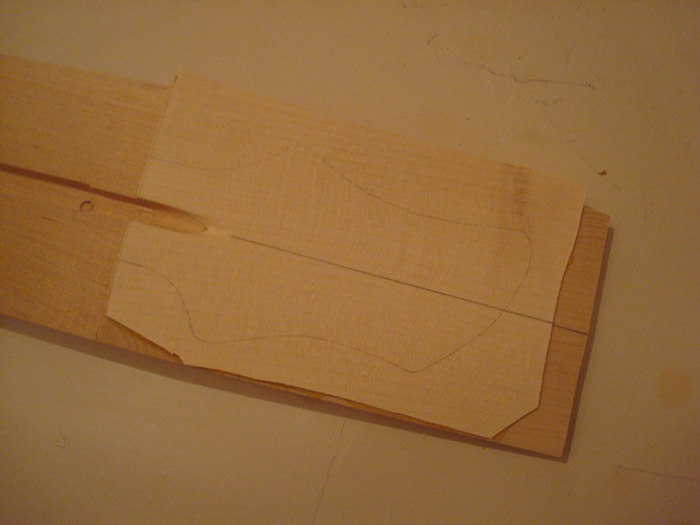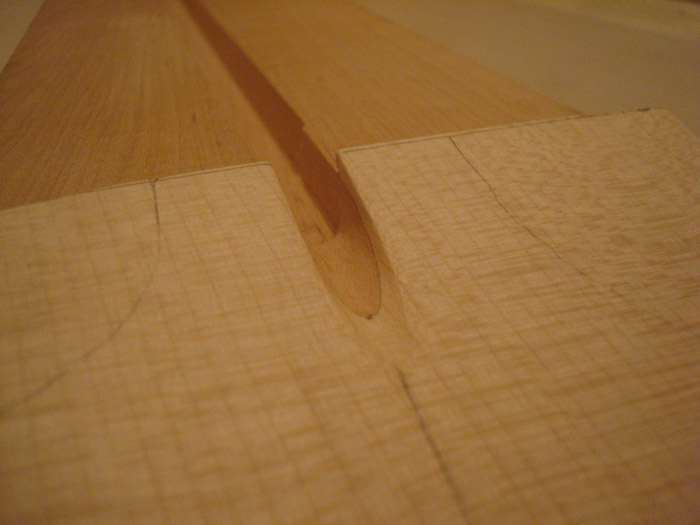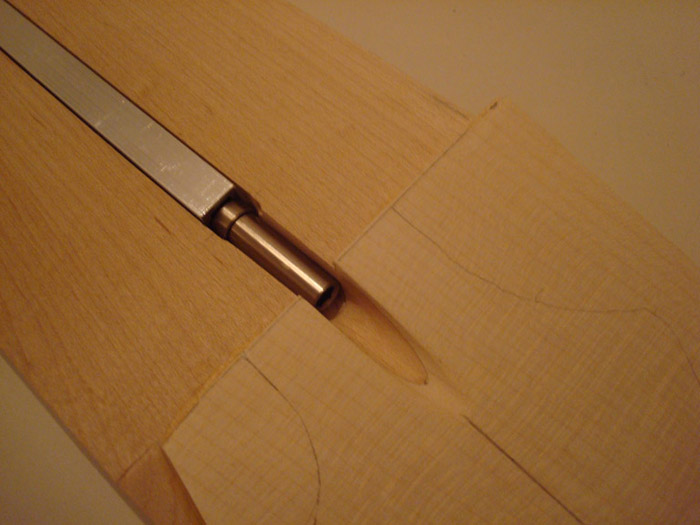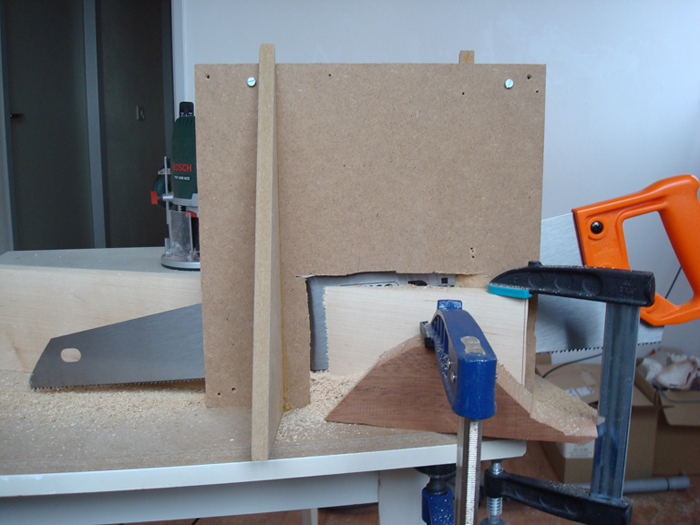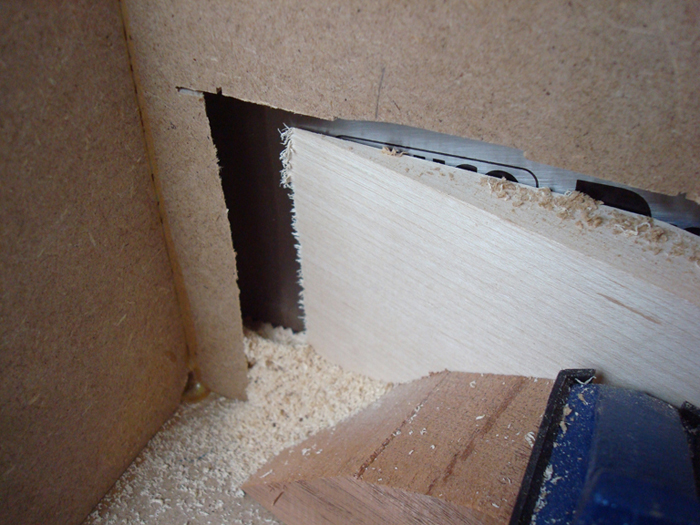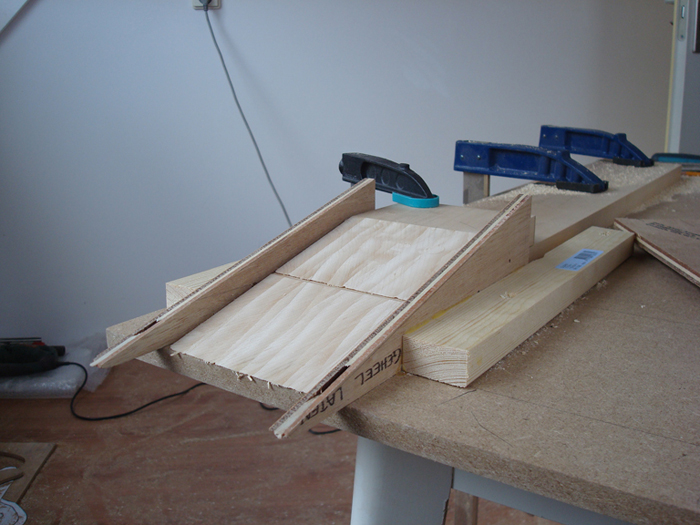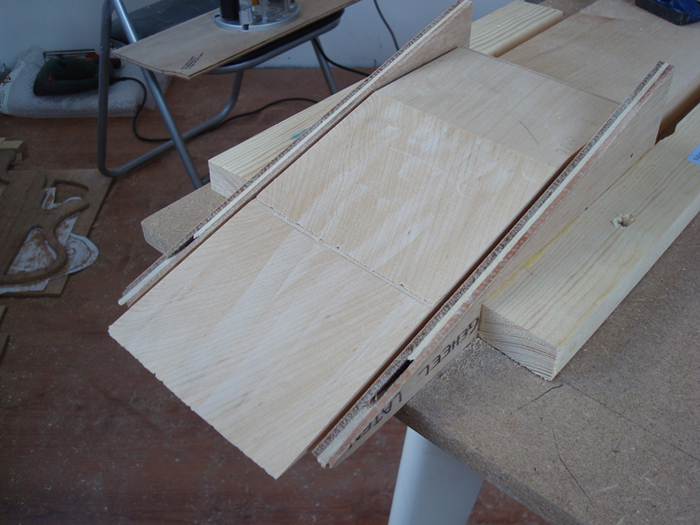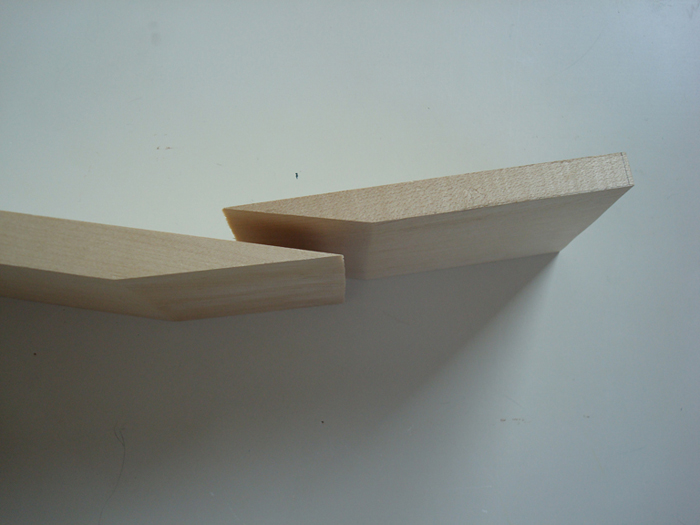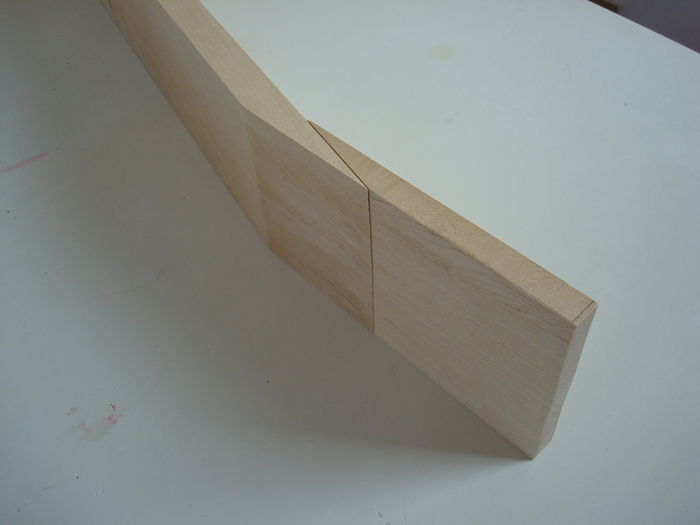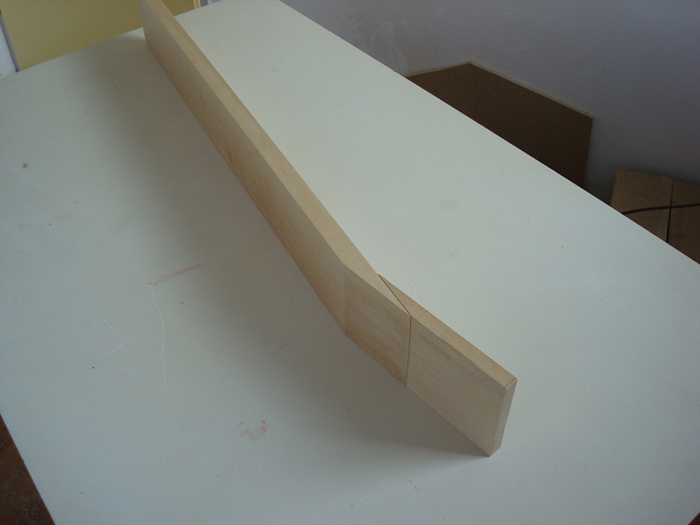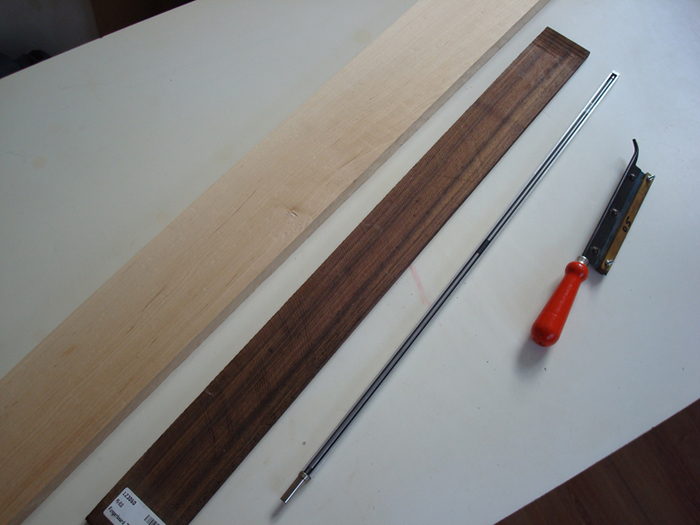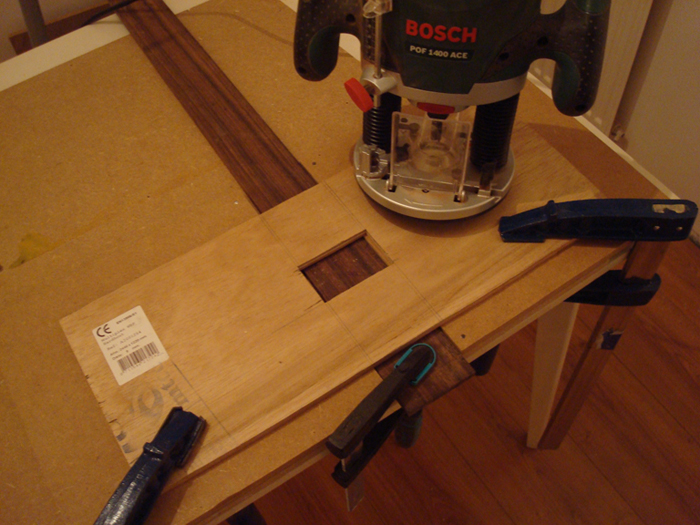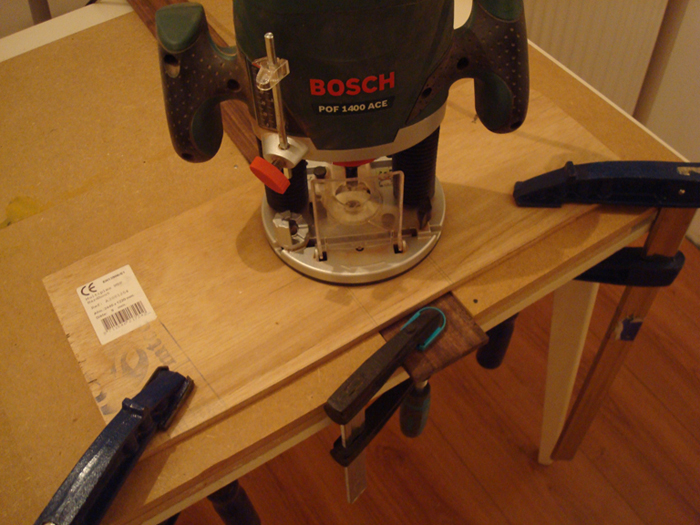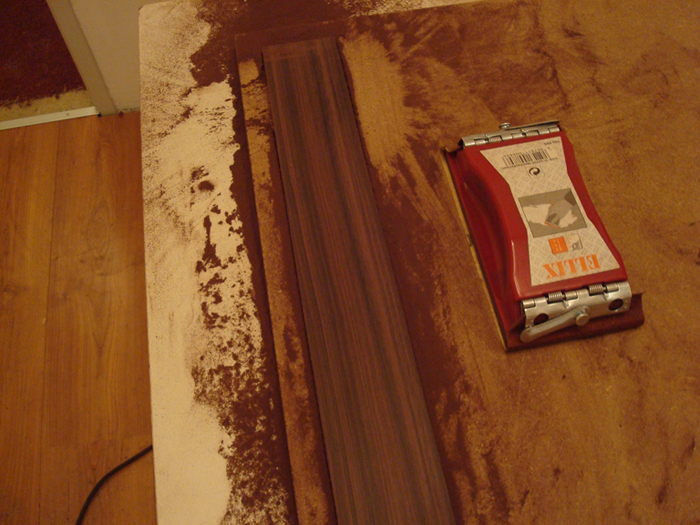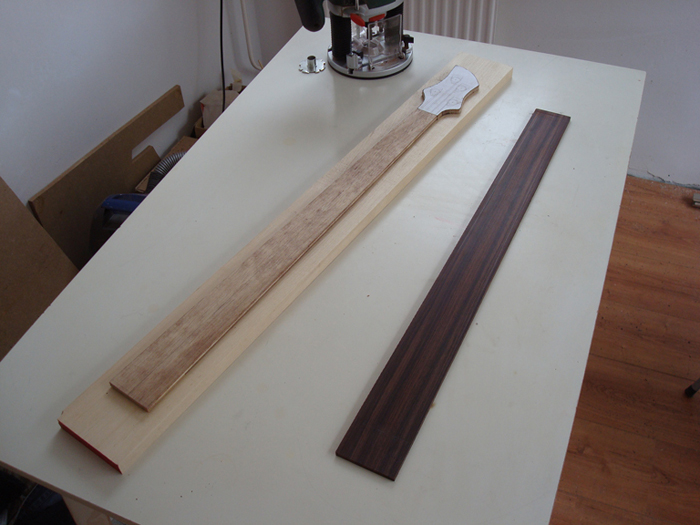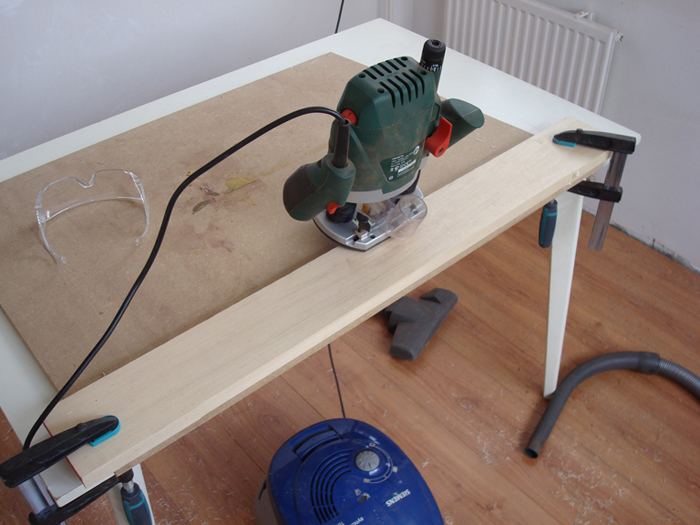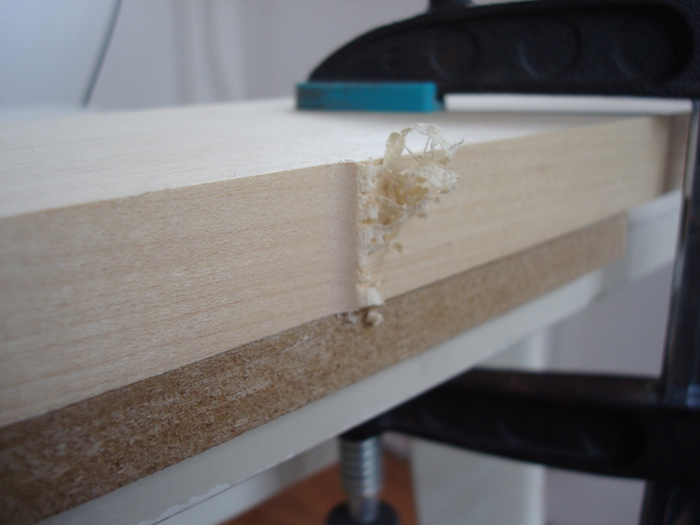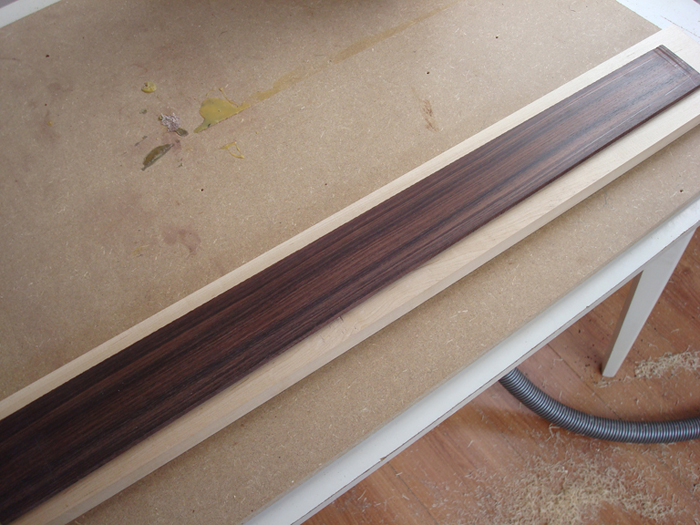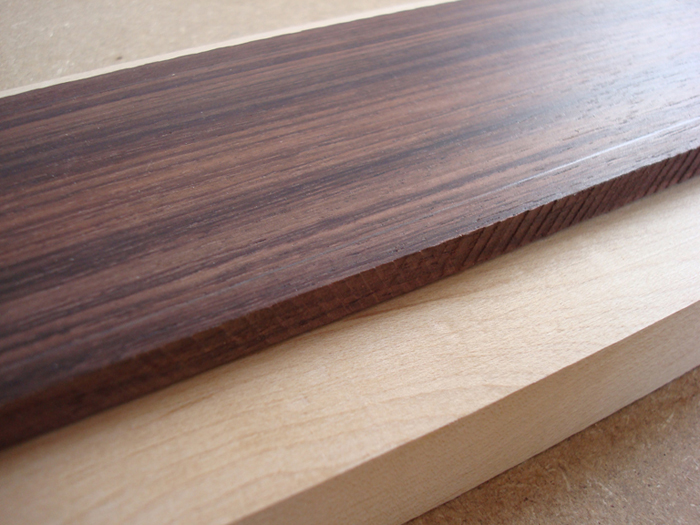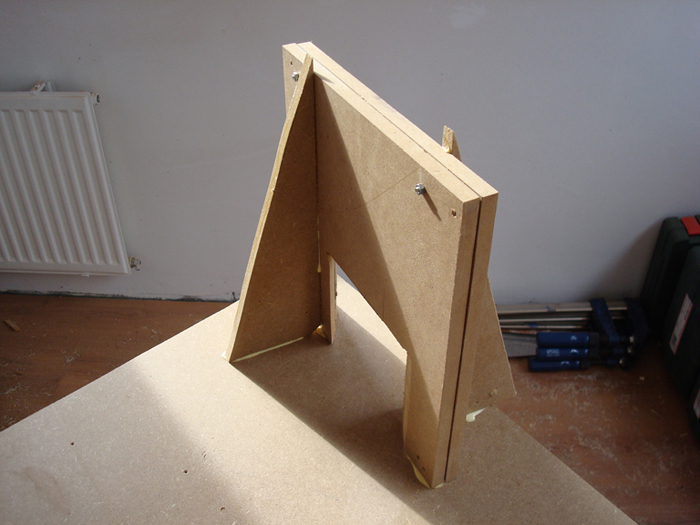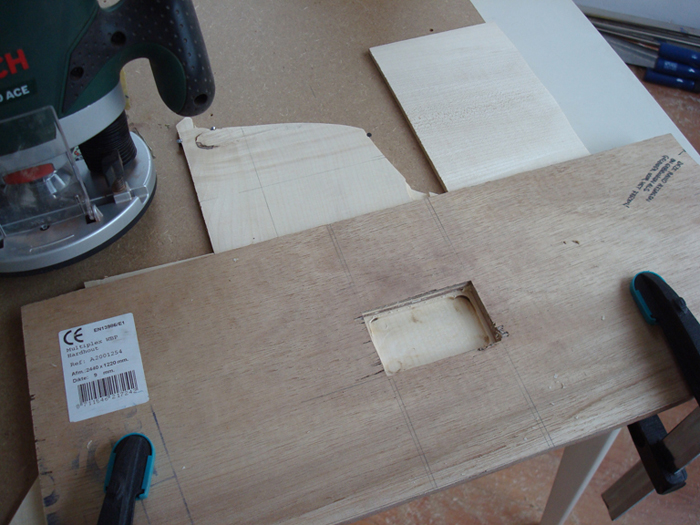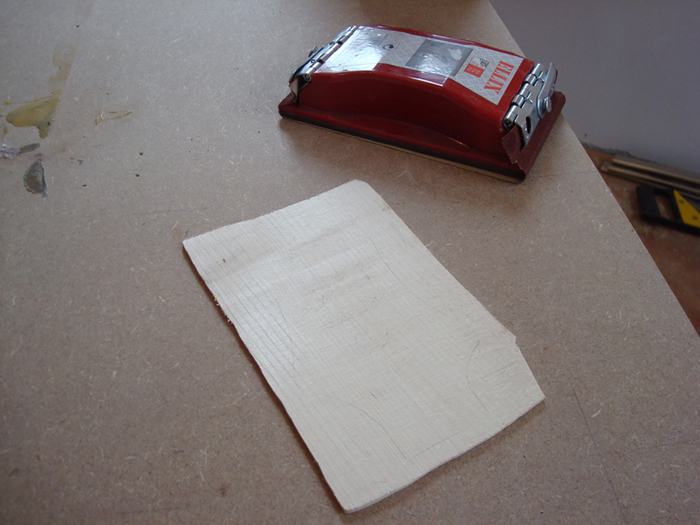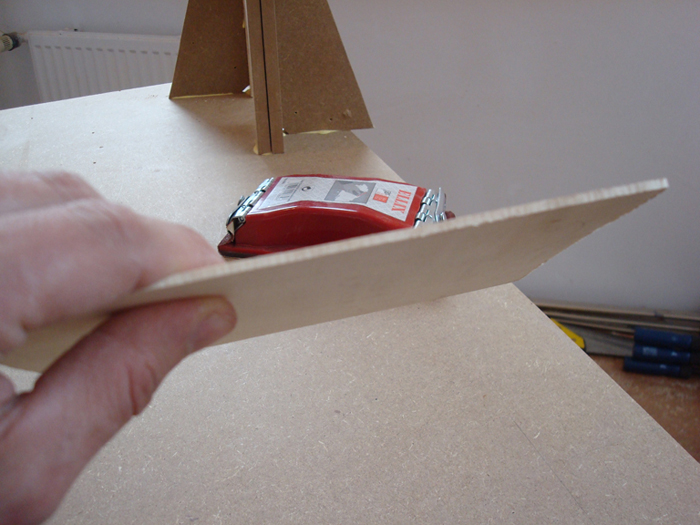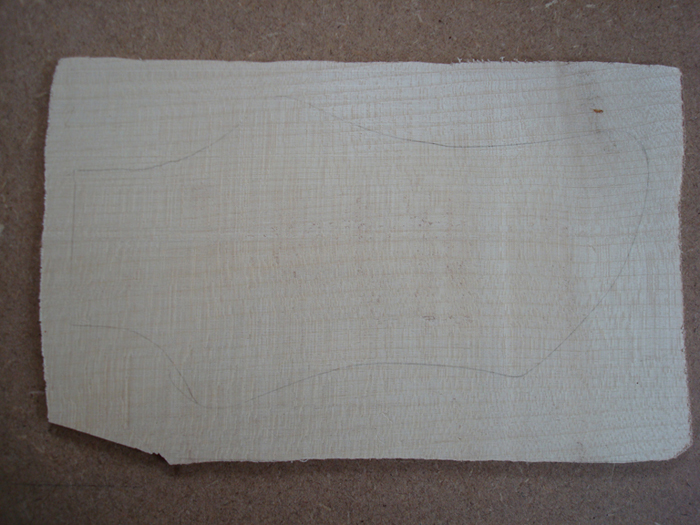This week I finally glued the headstock piece to neck. This is a somewhat scary step, because this type of joint is difficult to clamp (if you put pressure on two slanted surfaces, they’ll slide away) and because the result should be strong enough to hold the tension of four bass strings. Before glueing I first sanded the surface again, but this time with an orbital sander to get it as smooth and flat as I could.
Then I clamped it on the table without glue, just to test my setup. I used seven clamps and two blocks of wood, screwed to the table. I also used two pieces of plywood, wrapped in tape, to divide the pressure of the clamps evenly over the joint. The last step was to glue it and wait… 24 hours later I removed the clamps, cleaned it up and got to see the result. It’s not bad for a first time scarf joint, but I think, with the experience I have right now, that the next one could be even better.
I spent the rest of the evening to create a saddle for my router to route the truss rod channel. It has a larger base plate than the original, supporting two guides to hold the router in place. Since the channel has to be 10 mm wide and I only have got a 6 mm and a 12 mm router bit, I had to use the 6 mm bit. I made the saddle in a way, that the bit was exactly 2 mm off center. If I’d centered the bit, it would route 3 mm on each side of the center line, but using this offset, it routed 1 mm on the left and 5 mm on the right. And when you turn it over, it’s the other way around, resulting in an 10 mm wide channel. This took me quite a while and I messed up two times, but I got there.
The next day I routed the channel, which was very easy, using the saddle I made. As you can see on the pictures, it fits quite nice. But it’s not finished, I still have to route a channel or drill a hole for the adjustment nut. Today I also ordered some slow setting epoxy to glue it in.
Ps. I discovered a new little helper this week: double sided tape. If you look at the pictures, it looks like the neck blank is just lying on the table, but it’s not! It’s secured with only three small pieces of tape and if you try to lift it, you’ll lift the whole table! And it doesn’t get in your way alot like clamps do!
